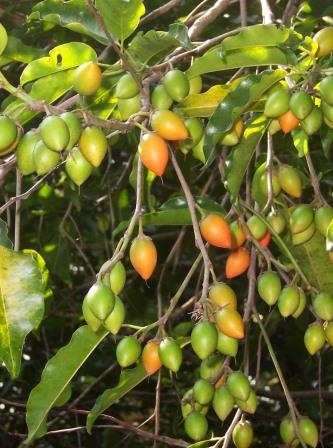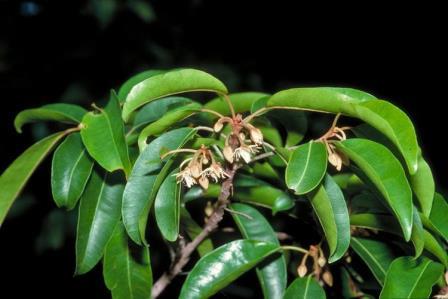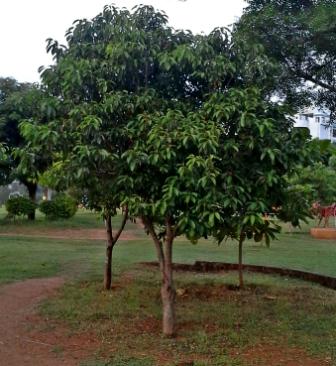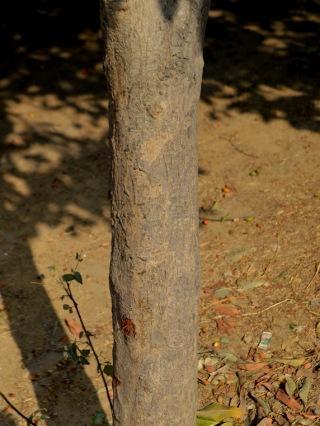Natural Regeneration :
- Regenerates Naturally by seeds
Artificial Regeneration :
- Propagated by nursery raised seedlings and vegetative cuttings.
Seed collection and Storage :
- Fruits are collected during February – March.
- Collected fruits are depulped and shade dried.
- Seed can be stored for about 9 months.
- Germination capacity is 70-90%.
Seed Treatment :
- pretreatment is not necessary.
Nursery Technique :
- Seed - best sown in individual polybags and kept in shade
- Germination takes place within 17 days
- Regular watering and weeding is essential.
- One year old nursery raised seedlings are fit for planting.
- One year old nursery raised seedlings are fit for planting.
- Pit size of 30 cm3 with spacing of 3 m x 3 m or 5m x 5 m can be adopted
Plantation technique :
Greenwood cuttings. The rooting success of 10 - 15cm long cuttings with a diameter of 5 - 10mm is 70 - 90%.Air layering.Grafting.
Care & Disease Control :
Pruning :
1. Prune trees to remove wayward, broken, dead, or diseased branches and limbs, or for safety around utility lines Use pruning saws and loppers for moderate work, and a chainsaw for heavy work. As always take all safety precautions when using power equipment, or when you have to get off the ground for pruning
2.Remove branches flush with limbs, limbs flush with trunks, leaving only short swollen areas instead of stubs which can rot into the interior ("heart") of the tree .
Irrigation :
For proper growth and survival it is necessary to give one or two waterings after planting. This is specifically required in arid regions. Irrigation after planting is not a prerequisite in areas having sufficient soil moisture and precipitation. Higher survival rate and better rate of growth is reported when soil and water conservation measures are also adopted.
Major uses :
- Wood is durable suitable for heavy general construction, bridge building, boat and shipbuilding, marine construction, flooring, bearings, doors and framing.
- A good-quality veneer and plywood can be manufactured from the wood.
- Tree also yields a good fuelwood.
- The tree has fragrant flowers and is often planted as an ornamental and shade tree in gardens and along roads, also in coastal sites.
- The leaves are used medicinally to treat headache, toothache, wounds and sore eyes, and are smoked to cure infections of the nose and mouth.
Other uses :
Bark :
A decoction of the bark, sometimes mixed with the flowers, has been used against fever, diarrhoea, inflammation of the gums, toothache, gonorrhoea, wounds and, mixed with tamarind bark, as a lotion for skin complaints. The flowers have been used against diarrhoea.
Carbon stock :
0.243 tC / tree





